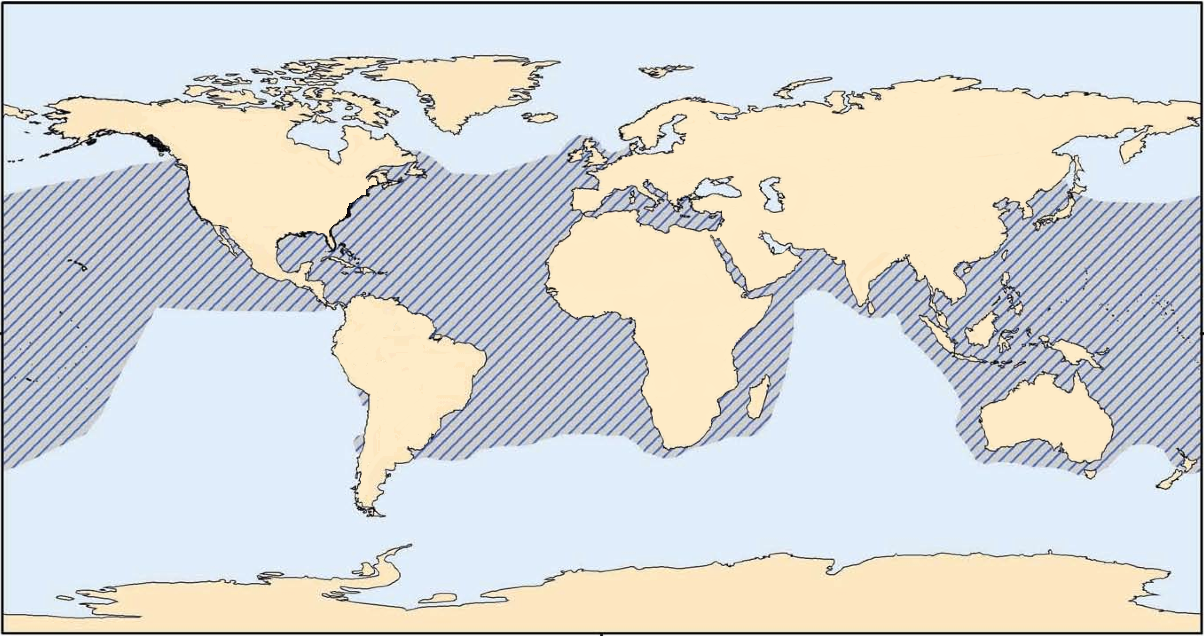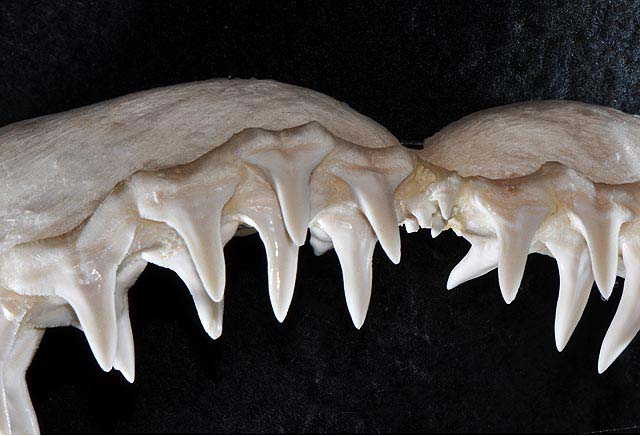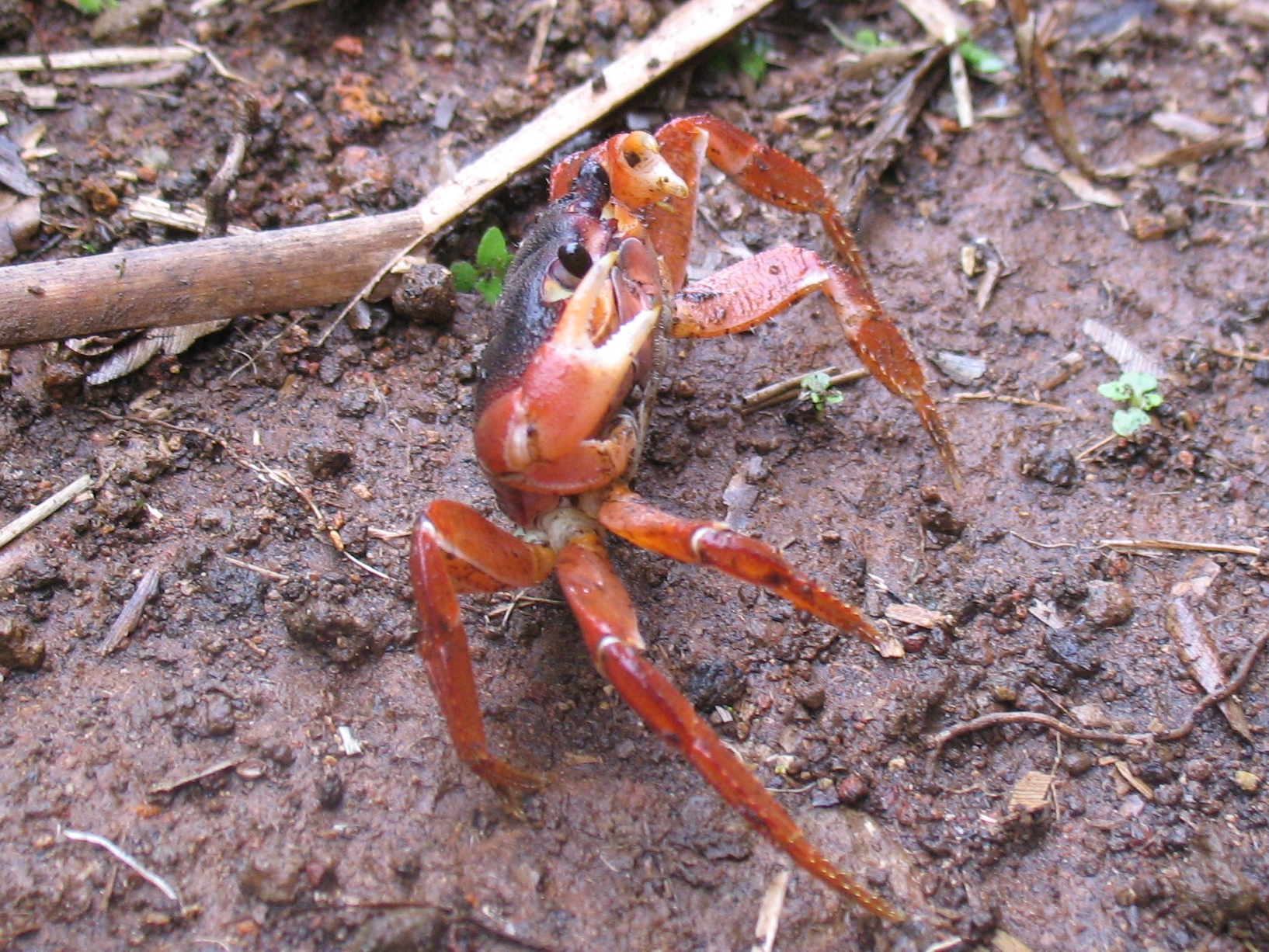|
Atol Das Rocas Biological Reserve
Atol das Rocas Biological Reserve () is a biological reserve in Brazil. It is located on the Rocas Atoll, an atoll north-east of the Brazilian coast. It was established in 1979 to protect nesting sea turtles and migratory seabirds. Geography Rocas Atoll is north east from the coast of Natal, Rio Grande do Norte in north-east Brazil, and is the only atoll in the south-western Atlantic. The coral atoll is built on the upper, western part of the flat top of a volcanic seamount on the north-eastern part of the Brazilian continental margin. The seamount rises to a depth of below the surface. The distance from the reef to the edge of the top of the seamount is about to the west, to the north-west and to the east. The sediment in the lagoon and surrounding the atoll is mostly coarse sand, much of which originates from the corals and mollusc shells. The reef has the shape of an ellipse with its axis running east–west, and is about . There are two small islands inside the lagoon. ... [...More Info...] [...Related Items...] OR: [Wikipedia] [Google] [Baidu] |
Biological Reserve (Brazil)
A biological reserve (, Rebio) in Brazil Brazil, officially the Federative Republic of Brazil, is the largest country in South America. It is the world's List of countries and dependencies by area, fifth-largest country by area and the List of countries and dependencies by population ... is a legally defined type of protected area of Brazil, a conservation unit that aims for full preservation of biota and other natural attributes without human interference. It may be visited only with prior approval of the responsible agency, and only for research or educational purposes. Definition A "Biological reserve" in Brazil is one of the Integral Protection Units defined by Article 13 of Law No. 9,985 of 18 July 2000, National System of Nature Conservation Units (SNUC). The biological reserve is public property. When it is established any private lands within its limits are expropriated. The manager of the biological reserve must prepare a management plan for approval by the respons ... [...More Info...] [...Related Items...] OR: [Wikipedia] [Google] [Baidu] |
Loggerhead Sea Turtle
The loggerhead sea turtle (''Caretta caretta'') is a species of sea turtle, oceanic turtle distributed throughout the world. It is a marine reptile, belonging to the Family (biology), family Cheloniidae. The average loggerhead measures around in carapace length when fully grown. The adult loggerhead sea turtle weighs approximately , with the largest specimens weighing in at more than . The skin ranges from yellow to brown in color, and the shell is typically reddish brown. No external differences in sex are seen until the turtle becomes an adult, the most obvious difference being the adult males have thicker tails and shorter plastrons (lower shells) than the females. The loggerhead sea turtle is found in the Atlantic Ocean, Atlantic, Pacific Ocean, Pacific, and Indian Oceans, as well as the Mediterranean Sea. It spends most of its life in saltwater and estuarine habitats, with females briefly coming ashore to lay eggs. The loggerhead sea turtle has a low reproductive rate; fem ... [...More Info...] [...Related Items...] OR: [Wikipedia] [Google] [Baidu] |
World Heritage Site
World Heritage Sites are landmarks and areas with legal protection under an treaty, international treaty administered by UNESCO for having cultural, historical, or scientific significance. The sites are judged to contain "cultural and natural heritage around the world considered to be of outstanding value to humanity". To be selected, a World Heritage Site is nominated by its host country and determined by the UNESCO's World Heritage Committee to be a unique landmark which is geographically and historically identifiable, having a special cultural or physical significance, and to be under a sufficient system of legal protection. World Heritage Sites might be ancient ruins or historical structures, buildings, cities, deserts, forests, islands, lakes, monuments, mountains or wilderness areas, and others. A World Heritage Site may signify a remarkable accomplishment of humankind and serve as evidence of humanity's intellectual history on the planet, or it might be a place of grea ... [...More Info...] [...Related Items...] OR: [Wikipedia] [Google] [Baidu] |
Chico Mendes Institute For Biodiversity Conservation
The Chico Mendes Institute for Biodiversity Conservation ( Portuguese: ''Instituto Chico Mendes de Conservação da Biodiversidade'', ICMBio) is a government agency under the administration of the Brazilian Ministry of the Environment. It is named after the environmental activist Chico Mendes. Its function is to protect, manage, and administrate protected areas within the country's territory. ICMBio is headquartered in Brasília Brasília ( ; ) is the capital city, capital of Brazil and Federal District (Brazil), Federal District. Located in the Brazilian highlands in the country's Central-West Region, Brazil, Central-West region, it was founded by President Juscelino .... References Nature conservation in Brazil Executive branch of Brazil Research institutes in Brazil Biodiversity databases Government agencies established in 2007 Environmental organizations established in 2007 2007 establishments in Brazil {{brazil-gov-stub, date=March 2014 ... [...More Info...] [...Related Items...] OR: [Wikipedia] [Google] [Baidu] |
IUCN Protected Area Categories
IUCN protected area categories, or IUCN protected area management categories, are categories used to classify protected areas in a system developed by the International Union for Conservation of Nature (IUCN). The enlisting of such areas is part of a strategy being used toward the conservation of the world's natural environment and biodiversity. The International Union for Conservation of Nature, IUCN has developed the protected area management categories system to define, record and classify the wide variety of specific aims and concerns when categorising protected areas and their objectives. Further supplementary guidelines have been developed specific to marine protected areas (MPAs). This categorisation method is recognised on a global scale by national governments and international bodies such as the United Nations and the Convention on Biological Diversity. Categories Category Ia – strict nature reserve A strict nature reserve (IUCN Category Ia) is an area which is ... [...More Info...] [...Related Items...] OR: [Wikipedia] [Google] [Baidu] |
Millepora Alcicornis
''Millepora alcicornis'', or sea ginger, is a species of colonial fire coral with a calcareous skeleton. It is found on shallow water coral reefs in the tropical west Atlantic Ocean. It shows a variety of different morphologies depending on its location. It feeds on plankton and derives part of its energy requirements from microalgae found within its tissues. It is an important member of the reef building community and subject to the same threats as other corals. It can cause painful stings to unwary divers. Taxonomy ''Millepora alcicornis'' is not a true coral in class Anthozoa but is in class Hydrozoa, and is more closely related to jellyfish than stony corals. Because of the variability in growth habit that this coral exhibits, it has been the subject of much confusion as to its taxonomy, being described under a number of different names from different localities. In 1898, Hickson decided that the variations in morphology were due to environmental factors and that ''Millepor ... [...More Info...] [...Related Items...] OR: [Wikipedia] [Google] [Baidu] |
Lemon Shark
The lemon shark (''Negaprion brevirostris'') is a species of shark from the family Requiem shark, Carcharhinidae, known for its yellowish skin, which inspires its common name. It is classified as a Vulnerable species by the International Union for the Conservation of Nature. Lemon sharks can grow to in length. They are often found in shallow subtropical waters and are known to inhabit and return to specific Nursery habitat, nursery sites for breeding. Often feeding at night, these sharks use electroreceptors to find their main source of prey, fish. Lemon sharks enjoy the many benefits of group living such as enhanced communication, courtship display, courtship, predatory behavior, and protection. This species of shark gives birth to viviparous, live young, and the females are Polyandry in nature, polyandrous and have a wikt:biennial, biennial reproductive cycle. Lemon sharks are not thought to be a large threat to humans; there have been 10 recorded bites, none of which were life- ... [...More Info...] [...Related Items...] OR: [Wikipedia] [Google] [Baidu] |
Starfish
Starfish or sea stars are Star polygon, star-shaped echinoderms belonging to the class (biology), class Asteroidea (). Common usage frequently finds these names being also applied to brittle star, ophiuroids, which are correctly referred to as brittle stars or basket stars. Starfish are also known as asteroids due to being in the class Asteroidea. About 1,900 species of starfish live on the seabed in all the world's oceans, from warm, tropics, tropical zones to frigid, polar regions of Earth, polar regions. They are found from the intertidal zone down to abyssal zone, abyssal depths, at below the surface. Starfish are marine invertebrates. They typically have a central disc and usually five arms, though some species have a larger number of arms. The aboral or upper surface may be smooth, granular or spiny, and is covered with overlapping plates. Many species are brightly coloured in various shades of red or orange, while others are blue, grey or brown. Starfish have tube fe ... [...More Info...] [...Related Items...] OR: [Wikipedia] [Google] [Baidu] |
Percnon Gibbesi
''Percnon gibbesi'' is a species of crab. It is one of at least two species commonly called Sally Lightfoot (the other being the semi-terrestrial ''Grapsus grapsus'' from the Pacific coast of the Americas), and is also referred to as the nimble spray crab or urchin crab. It has been described as "the most invasive decapod species to enter the Mediterranean". Description Adults have a carapace wide, and legs with yellow rings at the joints. Each of the five pairs of walking legs has a row of spines along the leading edge. Females carrying eggs have been caught off West Africa between February and April and August; the larvae which hatch from them are planktonic and long-lived, which may contribute to the species' invasiveness. Taxonomy The genus '' Percnon'' is currently placed in the family Percnidae, although it has also been placed in Plagusiidae. Distribution ''P. gibbesi'' is one of the most widespread grapsid crabs, being found on both sides of the Atlantic Ocean and on ... [...More Info...] [...Related Items...] OR: [Wikipedia] [Google] [Baidu] |
Johngarthia Lagostoma
''Johngarthia lagostoma'' is a species of terrestrial crab that lives on Ascension Island and three other islands in the South Atlantic. It grows to a carapace width of on Ascension Island, where it is the largest native land animal. It exists in two distinct colour morphs, one yellow and one purple, with few intermediates. The yellow morph dominates on Ascension Island, while the purple morph is more frequent on Rocas Atoll. The species differs from other '' Johngarthia'' species by the form of the third maxilliped. ''Johngarthia lagostoma'' lives in burrows among vegetation, at altitudes of up to , emerging at night to feed on plant matter and occasionally on animals. From January to March there is an annual migration to the sea to release the planktonic larvae. The species was first described (as ''Gecarcinus lagostoma'') by Henri Milne-Edwards in 1837 from material sent to him by the naturalists Jean René Constant Quoy and Joseph Paul Gaimard, collected by the French shi ... [...More Info...] [...Related Items...] OR: [Wikipedia] [Google] [Baidu] |
White-tailed Tropicbird
The white-tailed tropicbird (''Phaethon lepturus'') or yellow-billed tropicbird is a tropicbird. It is the smallest of three closely related seabirds of the tropical oceans and smallest member of the order Phaethontiformes. It is found in the tropical Atlantic (ocean), Atlantic, western Pacific and Indian Ocean, Indian Oceans. It also breeds on some Caribbean islands, and a few pairs have started nesting recently on Little Tobago, joining the red-billed tropicbird colony. In addition to the tropical Atlantic, it nests as far north as Bermuda, where it is locally called a "longtail". Taxonomy French zoologist François Marie Daudin described the white-tailed tropicbird in 1802. "White-tailed tropicbird" has been designated the official name by the International Ornithologists' Union (IOC). Its closest relative is the red-tailed tropicbird (''P. rubricauda''), the split between their ancestors taking place about four million years ago. Six subspecies are recognised by the IOC: ... [...More Info...] [...Related Items...] OR: [Wikipedia] [Google] [Baidu] |





